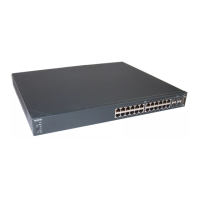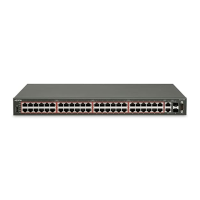Private VLAN Edge Technical Configuration Guide
QoS Action ID 10:
Name
Extension
By default, actions 1 to 9 are pre-assigned QoS actions which can be assigned
to a policy. In our example, we selected action ID 10 although any ID from 10-
55000 could have been used. The information shown via the show qos action
command for our example should display if-action-extension name of
fwd_port_27 via Extension. Via Name, as used in this example, fwd_27 is
used which will be used by the policy
Policy ID 1:
Classifier Name
Role Combination
In-Profile Action
In our example, as no previous policies have been defined, our policy will show
up with ID = 1. Here we selected the L2 classifier name of all_traffic and
assigned to ports 21 to 27 via the role combination we created above named
pri_vlan. The In-Profile-Action should display the QoS Action name fwd_27.
2.2 Private VLAN Example using VLAN Tagging for Server
Backup an Avaya Ethernet Routing Switch 5520-24T-
PWR
The following configuration example details the configuration of an Ethernet Routing Switch 5520-24T-
PWR (ERS5520-1) for Private VLAN in a L2 broadcast domain with VLAN tagging. This configuration
example will show how to force all ingress traffic from a VLAN out to a specific egress port. As illustrated
in the diagram below, all backup traffic from VMware Server 1 and VMware Server 2 will be forwarded
only to the VMware backup server.
Note that any ERS 4500 or 5000 series Ethernet Routing Switch can be used in this scenario.
For this example:
Configure ERS5520-1 as follows:
o Add data VLAN 1000 with port members 2, 3, and 5 for Client 1’s traffic to both VMware
Server 1 and VMware Server 2

